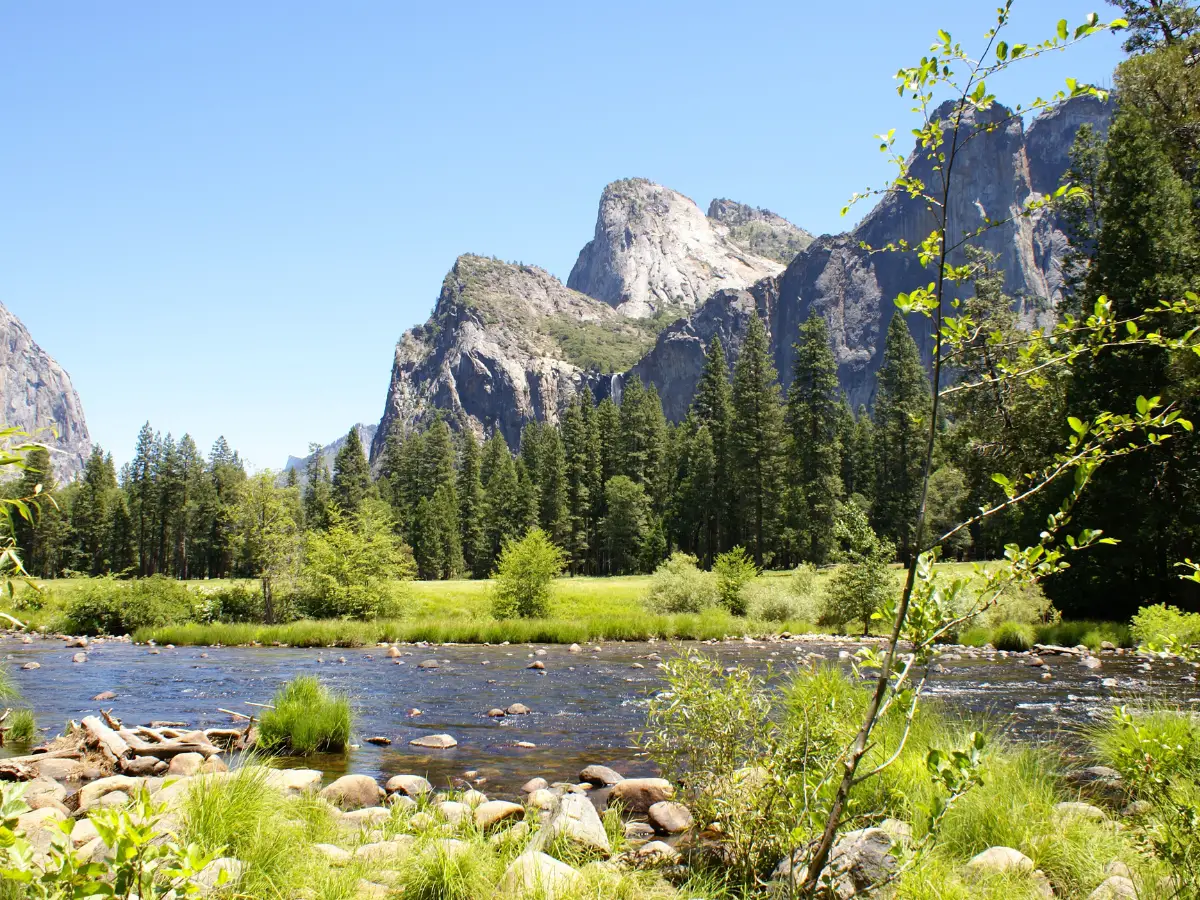California is known for its sunny beaches, palm trees, and warm weather. However, many people wonder if California is also a humid state. The answer is not straightforward, as California’s humidity levels vary depending on the region and time of year.
In general, California is not considered a particularly humid state. The state’s coastal regions, including San Francisco and Los Angeles, tend to have moderate humidity. However, inland areas such as the Central Valley and the Mojave Desert can experience deficient humidity levels, especially during summer.
Despite this, it is worth noting that California can experience occasional spikes in humidity, particularly during heatwaves or when tropical storms move up the coast.

Understanding Humidity
Humidity is the amount of water vapor in the air. It is an essential factor in determining the weather and climate of a particular region. In California, humidity levels vary depending on the location, time of day, and season. Understanding humidity is crucial in predicting weather patterns and forecasting potential natural disasters.
Relative humidity (RH) is the most commonly used measure of humidity. It is the ratio of water vapor in the air to the amount of water vapor the air can hold at a particular temperature. RH is expressed as a percentage ranging from 0% (arid air) to 100% (saturated air).
The ideal relative humidity for human comfort is between 30% to 50%. When the RH is too low, it can cause dry skin, respiratory problems, and static electricity. On the other hand, high RH levels can cause mold growth, musty odors, and structural damage to buildings.
In California, the average annual humidity levels vary from region to region. Coastal areas tend to have higher humidity levels compared to inland areas. For example, San Francisco has an average annual RH of 75%, while Sacramento has an average annual RH of 61%.
It is essential to monitor humidity levels in your home to ensure optimal comfort and prevent damage to your property. You can use a hygrometer to measure RH levels and take steps to control humidity levels through proper ventilation, air conditioning, and dehumidification.

Climate of California
California is known for its diverse climate, with various regions experiencing different weather patterns. The state’s climate is influenced by its location on the west coast of the United States, as well as its proximity to the Pacific Ocean and the Sierra Nevada mountain range.
Coastal Climate
The coastal climate of California is characterized by mild temperatures and high humidity. The ocean moderates the temperature, resulting in cool summers and mild winters. The average temperature in coastal cities like San Francisco and Los Angeles ranges from 50°F to 70°F. Coastal areas also experience frequent fog, especially during the summer months.
Inland Climate
Inland areas of California experience a Mediterranean climate, with hot, dry summers and cool, wet winters. Temperatures can reach up to 100°F during the summer months, and rainfall is scarce. Inland areas like Sacramento and Fresno have an average temperature range of 40°F to 90°F.
Mountain Climate
The mountainous regions of California experience a highland climate, with cold, snowy winters and mild summers. The Sierra Nevada mountain range receives heavy snowfall during the winter months, with some areas receiving up to 500 inches of snow per year. The average temperature in mountainous regions like Lake Tahoe ranges from 20°F to 70°F.
Overall, California’s climate varies greatly depending on the region. Coastal areas are generally cooler and more humid, while inland and mountainous regions experience hotter and drier weather. It’s important to consider the climate when planning a trip to California, as temperatures and weather conditions can vary greatly throughout the state.

Factors Influencing Humidity in California
Ocean Currents
The Pacific Ocean plays a significant role in California’s climate and humidity levels. The California Current, a cold-water current, flows southward along the coast, bringing cool air and low humidity. The ocean’s surface temperature is lower than the air temperature, which causes the air to cool and reduce its ability to hold moisture. As a result, coastal areas tend to have lower humidity levels than inland areas.
Wind Patterns
Wind patterns also influence humidity levels in California. The state experiences two dominant wind patterns: the onshore flow and the offshore flow. The onshore flow brings moist air from the ocean, which can increase humidity levels in coastal areas. In contrast, the offshore flow brings dry air from inland areas, which can reduce humidity levels.
Geographical Features
California’s geographical features also play a role in its humidity levels. The state’s mountain ranges, including the Sierra Nevada and the Coast Range, act as barriers that prevent moisture from moving inland. As a result, coastal areas tend to have higher humidity levels than inland areas. Additionally, the state’s deserts, such as the Mojave and the Colorado, have low humidity levels due to their arid climate.
Overall, California’s humidity levels are influenced by a combination of factors, including ocean currents, wind patterns, and geographical features. Understanding these factors can help predict and manage humidity levels in different regions of the state.
| Factors Influencing Humidity in California |
|---|
| Ocean Currents |
| Wind Patterns |
| Geographical Features |
- The California Current, a cold-water current, flows southward along the coast, bringing cool air and low humidity.
- The onshore flow brings moist air from the ocean, which can increase humidity levels in coastal areas.
- California’s mountain ranges act as barriers that prevent moisture from moving inland.
- The state’s deserts have low humidity levels due to their arid climate.

Humidity Variation Throughout the Year
California is known for its dry, sunny weather, but humidity levels can vary throughout the year depending on the region and season. In general, coastal areas tend to have higher humidity levels than inland areas due to the proximity to the ocean.
During the summer months, coastal areas experience the highest humidity levels, with average afternoon humidity readings around 80%. Inland areas, on the other hand, tend to have lower humidity levels during the summer, with average afternoon humidity readings around 30-40%.
In the winter months, humidity levels tend to be lower across the state. Coastal areas still have higher humidity levels than inland areas, but the difference is less pronounced. Average afternoon humidity readings in coastal areas during the winter are around 60%, while inland areas have average afternoon humidity readings around 20%.
It is important to note that humidity levels can vary greatly depending on the day and weather patterns. Heat waves and monsoonal moisture can cause temporary spikes in humidity levels, while dry Santa Ana winds can bring extremely low humidity levels to certain areas.
Overall, while California may not be known for its humidity, it is still important to be aware of the variations throughout the year and how they can impact daily life.
Impacts of Humidity in California
Health Impacts
Humidity can have a significant impact on human health. High humidity levels can make it harder for the body to cool down, leading to heat exhaustion or heat stroke. These conditions can be life-threatening, especially for vulnerable populations such as the elderly and those with pre-existing medical conditions. In addition, high humidity levels can exacerbate respiratory issues such as asthma, making it harder to breathe.
On the other hand, low humidity levels can also lead to health problems such as dry skin, nosebleeds, and respiratory irritation. It is important to maintain a balance of humidity levels to ensure optimal health and comfort.
Agricultural Impacts
Humidity can also have a significant impact on agriculture in California. High humidity levels can lead to the growth of molds and fungi, which can damage crops and reduce yields. In addition, high humidity levels can make it harder for plants to absorb water, leading to wilting and dehydration.
Low humidity levels can also have negative impacts on agriculture. Dry air can lead to soil moisture loss, making it harder for plants to grow. It can also lead to increased water usage for irrigation, which can be costly and unsustainable.
Overall, it is important to consider the impacts of humidity on both human health and agriculture in California. Maintaining optimal humidity levels can help to mitigate these impacts and ensure a healthy and sustainable environment.
| Pros | Cons |
|---|---|
| High humidity can help with skin hydration | High humidity can lead to mold growth |
| Low humidity can reduce the spread of viruses | Low humidity can cause respiratory irritation |
| Optimal humidity levels can lead to optimal health and comfort | Extremes in humidity can lead to health problems and crop damage |
Comparing Humidity: California vs Other States
When it comes to humidity, California is often touted as a dry state, but is it really? Let’s compare California’s humidity levels to those of other states in the US.
According to the search results, Iowa is the most humid state in the US, with an average humidity score of 70% and above. Meanwhile, California’s average humidity score is around 60%, which is lower than most other states. However, it’s important to note that humidity levels can vary greatly depending on the time of day and season.
The table provided by Current Results shows the average summer humidity percentages for each state. According to the table, California has an average morning humidity of 63% and an average afternoon humidity of 45%. This puts California in the middle of the pack compared to other states. For example, Florida has an average morning humidity of 89% and an average afternoon humidity of 62%.
It’s also worth noting that California’s coastal regions tend to have higher humidity levels than inland areas. This is because of the ocean’s influence on the climate. In fact, areas like San Francisco and Los Angeles can experience foggy conditions due to the high levels of moisture in the air.
Overall, while California may not be the driest state in the US, it does tend to have lower humidity levels compared to many other states. However, it’s important to keep in mind that humidity can vary greatly depending on location and time of day.
Frequently Asked Questions
What are the top 10 least humid states?
According to data from the National Oceanic and Atmospheric Administration (NOAA), the top 10 least humid states in the United States are Nevada, Arizona, Utah, Wyoming, Idaho, California, Oregon, New Mexico, Colorado, and Montana.
What is the average humidity in California?
The average humidity in California varies depending on the region and time of year. Coastal areas tend to be more humid than inland areas. In general, the average relative humidity in California ranges from around 60-70% in coastal areas to around 30-40% in desert regions.
What are the most humid states in the summer?
The most humid states in the summer are typically located in the southeastern United States. States like Florida, Louisiana, Mississippi, Alabama, and Georgia experience high levels of humidity during the summer months.
What is the average monthly humidity by state?
The average monthly humidity by state varies depending on the time of year and region. Generally, states in the southeastern United States tend to have higher levels of humidity throughout the year, while states in the western United States tend to have lower levels of humidity.
Is California considered a dry or humid state?
California is generally considered a dry state, particularly in its inland regions. However, coastal areas of California can experience higher levels of humidity, particularly during the summer months.
Why doesn’t California get humid?
California doesn’t get as humid as some other states due to its geography and weather patterns. The state is located on the west coast, which means it is influenced by cool ocean currents that help keep humidity levels lower. In addition, California’s Mediterranean climate means that it tends to be drier than other regions of the country.





